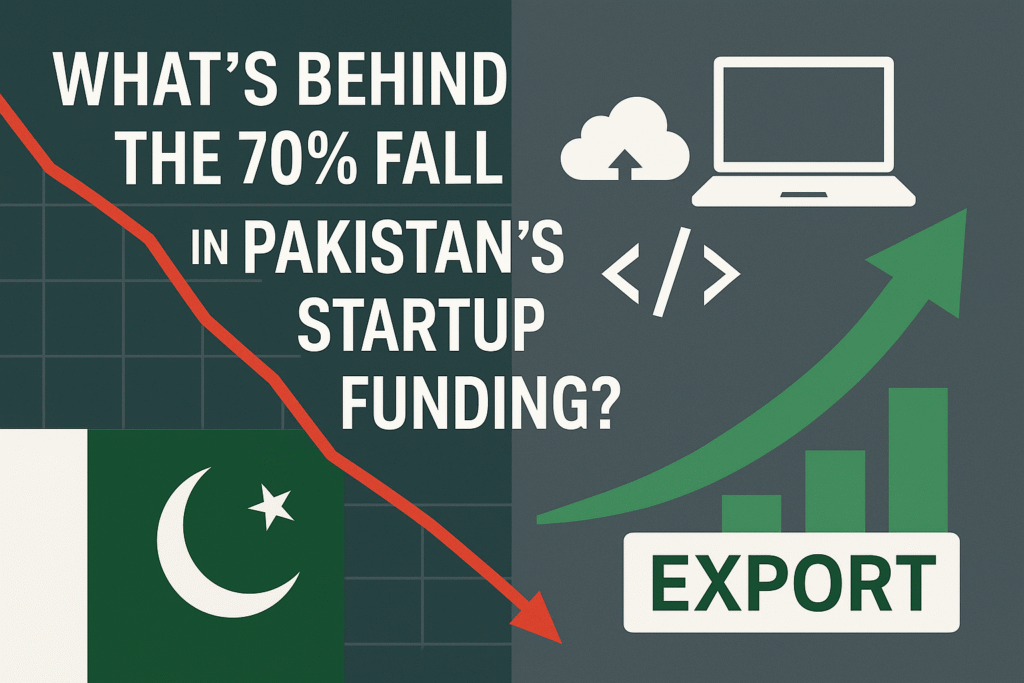
In 2024, the startup scene in Pakistan had to deal with a tough reality: financing plummeted a lot. According to Data Darbar, total investment fell by 70%, from $75.8 million in 2023 to just $22.5 million. The number of deals also plummeted substantially, from 39 to only 15, a drop of 61%. Even though fewer firms got funding, those who did were able to get more money per deal. This means that investors are acting differently: they are making fewer bets but putting more money into each one. More Money for Fewer Startups The average contract size was up 68%, to $3.75 million. The typical sale size also went up by 158%, to $3.1 million. This is part of a trend where investors are being more picky and focusing on firms that have clear potential and solid fundamentals. Funding for Early Stages Comes First A look at the different stages of fundraising shows a preference for early-stage investments: Pre-Series A rounds made up 48% of the money that was made public. The next level of finance was seed-stage, which made up 38%. Only 14% of the total was in Series A, down from 25% the year before. It’s interesting that there were no Series B rounds in 2024. This shows that investors are becoming less willing to back later-stage firms. This could be because of problems with leaving and worries about the economy as a whole. Gender Differences Still Exist The financing landscape also showed that gender disparity was still a problem: 75.6% of all investment went to firms started by men. 24.4% of people were interested in teams with both men and women. In 2024, no money went to startups that were only run by women. This big discrepancy shows how important it is for investors to be more open-minded and to help women entrepreneurs in Pakistan. Debt financing gives you a way out. Many entrepreneurs turned to debt finance after their equity money ran out. Through 28 loan agreements, a total of $20.5 million was raised. Some of the main areas that benefited from this were: 46.7% of fintech 37.8% of people shop online 8.9% of the time in real estate 6.7% for CleanTech This pattern shows that firms that make money are seeking other methods to stay afloat in a tough equity market. Mergers and acquisitions keep going down. There was also a big drop in M&A activity in Pakistan. There were only five deals in 2024, which is a 44% drop from the year before and a big drop from 17 deals in 2022. It is interesting to note that 80% of these were domestic, which is a change from the previous trend of cross-border transactions. From 2020 to 2024, Pakistan had a total of 38 M&A agreements. 25 deals across borders 13 transactions in the US When it comes to types of businesses: They bought 14 companies that made products. 18 businesses that provide services 6 companies that use a hybrid model The drop in acquisition activity is a sign of both economic instability and investors’ lower interest in long-term investments. The tech sector does better than the rest of the economy. Even while funding is down, there is one good thing: The tech industry in Pakistan as a whole is still doing well. The ICT sector rose by 8.5%, which is far faster than the country’s overall GDP growth of 1.73%. Some important things to know about exports are: ICT exports went up 33.7% from last year to $3.6 billion. Computer services made up $3.1 billion, which is a 38.5% increase. Telecom services brought about $550 million. Information services jumped by 341.5% to $22.4 million. These numbers show that even while there may not be a lot of local funding, Pakistan’s IT economy, which is based on exports, is nevertheless doing well around the world. In short: Realignment instead of retreat So, why has Pakistan’s startup funding dropped by 70%? The solution is a mix of big economic problems, cautious investors, and a change in focus. The decline in funding is large, but it does not imply the end. Instead, it appears to be the ecosystem will be going via a realignment phase, one that values sustainability, profitability, and global relevance in addition to hyper-growth.